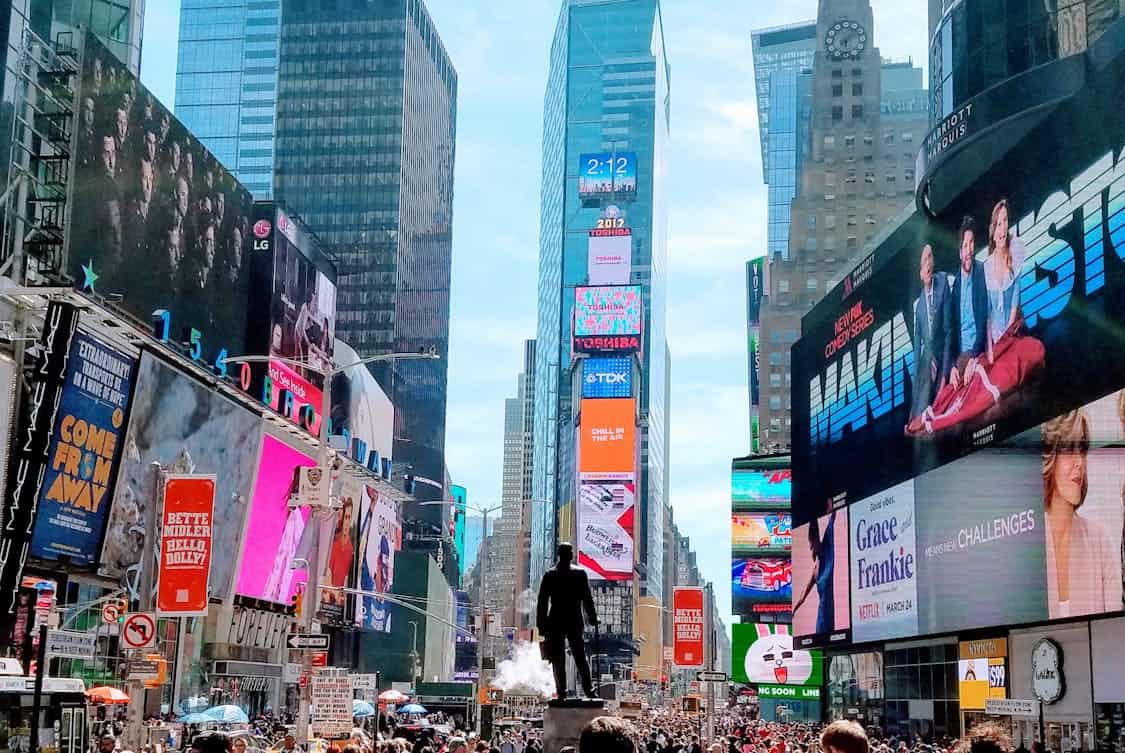Seasonal flags — bright banners, themed pennants, or holiday motifs — are a common sight outside many retail outlets. Retailers plant them to flag a sale, a seasonal menu, or fresh curb appeal that catches attention.
This article weighs evidence on whether those flags actually pull more people into stores and what factors tip the balance.
How Seasonal Flags Grab Attention
Flags create motion and color that cut through the static clutter on a busy street, and that motion often triggers a fast visual check by a passing shopper. Human perception favors movement and contrast, so a fluttering fabric reads as an item worth a glance more quickly than a fixed board or a small sticker in a window.
If you’re preparing for an upcoming sale or festive campaign, investing in a well-designed holiday promotional display can instantly elevate your store’s curb appeal and draw in more customers.
Short, punchy messages on a flag — think two-word n-grams like “Big Sale” or “New Menu” — act as micro-signals that map onto familiar shopping queries, speeding comprehension. In plain terms, a well-placed banner makes a store startle into view, turning unnoticed façades into clickable, walk-in options.
Visual Impact On Pedestrian Footfall
Visible cues change foot traffic in predictable patterns, carving small zones of interest near doorways that resemble lighted magnets on a map of movement. A row of flags can form a directional corridor that guides feet toward a door, translating visual rhythm into physical steps when flags repeat and reinforce the message.
Variation in color intensity, size, and typography affects dwell time and whether passersby progress from glancing to entering, because the brain prizes quick, low-effort decisions. Local context matters too: a single discreet pennant in a dense strip won’t pull like a sequence of bold banners on a slow pedestrian boulevard.
Emotional Signals And Store Identity
Flags do more than point; they give a store a mood at a glance, offering cues about tone, event, and what the shop stands for in seconds rather than paragraphs. A festive flag with warm hues can strike a chord with holiday shoppers, drawing on shared cultural triggers, while a minimalist banner with monochrome type signals a higher-end proposition and a different customer intent.
Color psychology and short slogans combine to form a compact emotional snapshot that directs split-second choices at curbside, nudging curiosity into action. When flags harmonize with brand voice and visual identity, they reinforce credibility; when they clash, they create friction that thins the funnel.
Timing And Seasonal Relevance
Timing amounts to a rhythm around shopper habits and local events, not merely slapping a red flag on the first cool day of autumn and calling it a campaign. Flags launched too early risk looking odd, while late deployment misses the early shoppers who set the tempo for a season, and both outcomes blunt the effect.
Short, targeted runs tied to local holidays, weather shifts, or weekend promos commonly produce clearer lifts than banners left up year-round that sink into visual background noise. A controlled timing test that tracks traffic in pre-flag and post-flag windows can isolate the moments when the banner signal is strongest and worth repeating.
Placement And Design Factors

Placement choices include height, lean, set-back from the curb, and relationship to nearby visual noise, all elements that change readability and approach vectors for pedestrians and drivers. Design matters too: contrast, size of type, and message brevity determine whether someone parsing the street can decode the offer in the few seconds they have; too much copy stalls comprehension.
Smaller flags with dense wording reduce click-through behavior, while large type, clear contrast, and short n-grams speed up recognition and the decision to step inside. Running short A/B cycles with alternate layouts helps find a balance between visual flair and quick legibility that actually moves people.
Cost, Maintenance, And Return
Flags are upfront inexpensive compared with a full storefront makeover, yet they carry ongoing maintenance needs that affect net return on the investment bucket. Weather, sun, and wind fray fabric and wash out ink, eroding credibility and the original attention-grabbing power if replacements are not sourced on a predictable cadence.
A simple return calculation compares incremental sales lift during flagged windows against purchase, installation, and labor for replacement or repair, yielding a payback period that is straightforward to track. Stores with hourly sales data can isolate micro-lifts and attach a dollar figure to flag campaigns, sharpening future budget choices and replacement cycles.
Measuring Traffic Changes Quantitatively
Raw data beats gut calls: foot counters, point-of-sale timestamps, and short-run sales comparisons create a before-versus-after picture that separates chance from effect. Parallel testing — one store runs seasonal flags while a matched location does not — produces cleaner signals when the stores share size, location type, and customer base.
Key metrics to monitor include conversion rate, average transaction amount, and visit cadence for customers during the banner window, since those numbers show whether flags drove intent or merely curiosity. Applying simple statistical checks flags random spikes and highlights sustained behavior shifts that merit repetition.
Common Mistakes To Avoid
An obvious misstep is clutter: too many competing banners or overloaded copy creates noise that cancels the banner benefit, turning the curb into a blur rather than a beacon. Poor material choice and neglected maintenance send a message of carelessness that outweighs any short-term traffic gain, because shoppers make quick quality judgments based on external cues.
Using flags that conflict with a store’s core styling can confuse loyal customers and dilute the brand narrative, creating cognitive friction at the threshold. Testing without control groups or without tracking short-term metrics leaves teams guessing, which wastes both creative energy and real dollars.
Complementary Tactics That Amplify Flags
Flags play best when they are one instrument in an ensemble that includes window setups, sidewalk A-frames, and staff who acknowledge passersby with a quick line that warms the initial contact. Pairing a flag that advertises a limited offer with an easily reachable QR code or a geo-targeted mobile message reinforces the cue and lets a person act in the moment rather than filing the idea away.
Small in-store signals, like a matching color motif or a featured display aligned with the flag copy, close the loop from outside curiosity to inside action, converting peekers into buyers. When physical cues and digital nudges sing from the same sheet music, the combined effect lifts results above what each would produce alone.














